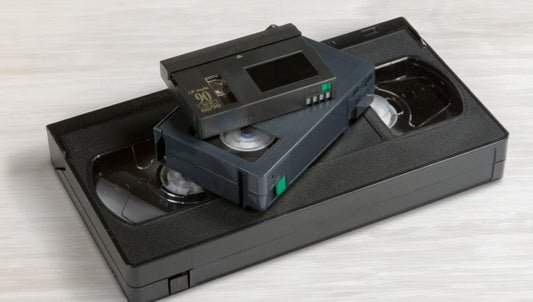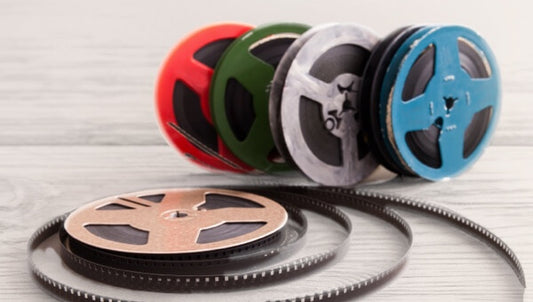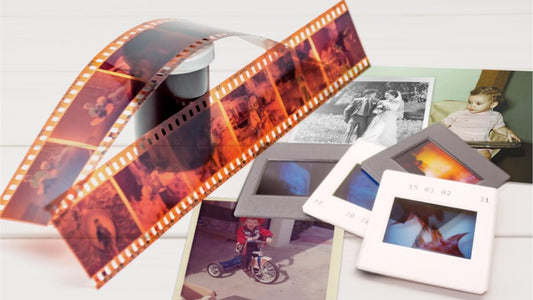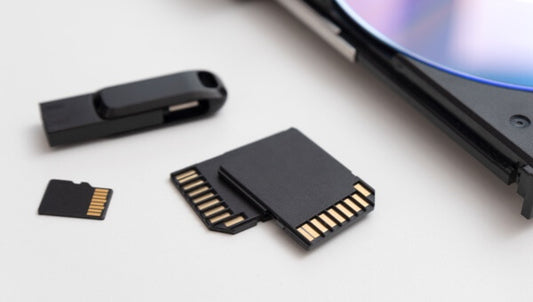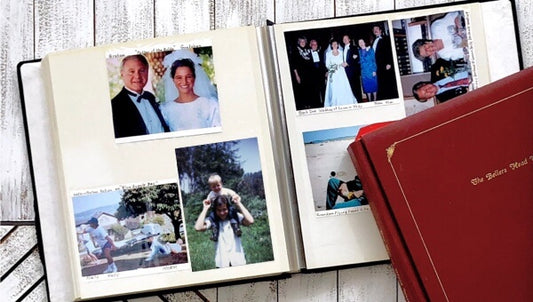Not all image files are created equal. If you’ve ever tried to choose between saving a photo as a TIFF or a JPEG, you’ve probably noticed they look similar—but behave very differently. One gives you crisp, uncompressed quality perfect for editing and archiving. The other balances visual appeal with file size for easy sharing and storage. So, what exactly sets them apart, and when should you choose one over the other? Let’s break down the real differences between TIFF vs. JPEG - and why it matters whether you’re making family scrapbooks or archiving old prints.
What is JPEG?
JPEG (Joint Photographic Experts Group) is the most widely used image format in the world. It compresses image files to reduce size while maintaining decent visual quality, making it ideal for fast storage and sharing. That’s why JPEG is the default format for digital cameras, smartphones, and most web platforms.
The JPEG standard was introduced in 1992 and quickly became the global format for digital images, especially on the web, thanks to its balance of quality and compression.
Its key strength lies in flexibility. Compression can be adjusted—smaller files for quicker uploads or higher quality for better detail. This adaptability supports everything from casual photography to mobile printing and lightweight photo sharing.

Deciding between TIFF vs. JPEG? Your choice impacts image quality, editability, and how your files are stored or shared long term.
What is TIFF?
TIFF (Tagged Image File Format) is a professional-grade image format designed for long-term preservation and editing precision. Unlike JPEG, it uses uncompressed or lossless compression, meaning no data is lost during saves or edits. This makes it ideal for maintaining image integrity over time.
Interestingly, TIFF actually predates JPEG. It was developed in the mid-1980s by Aldus Corporation to support high-resolution desktop publishing and printing—making it one of the earliest formats focused on professional image quality.
TIFF supports high bit-depths, multiple color channels, and layered content, making it a trusted format in fields that demand maximum accuracy. It’s widely used in professional photography, medical imaging, graphic design, and high-resolution document scanning.
Its compatibility with editing software and industry-grade equipment allows for reliable, repeated access without degradation. While TIFF files are large and less suited for casual sharing, they’re essential in workflows where preserving every detail matters—such as those handled by a professional photo digitizing service.
TIFF vs. JPEG: Pros and Cons
Choosing between TIFF and JPEG often comes down to how you plan to use the image. Each format serves a distinct purpose, offering different benefits and trade-offs.
TIFF: Pros
- Lossless quality – No data is lost during editing or saving
- Supports high bit-depth and color spaces – Ideal for detailed, color-accurate work
- Great for archiving – Trusted by museums, libraries, and preservation professionals
- Multi-page support – Useful for scanned documents or layered designs
- Compatible with professional software and equipment
TIFF: Cons
- Large file sizes – Requires more storage and bandwidth
- Slower to transfer and open – Not ideal for casual use
- Less universal – Some devices and apps don’t support TIFF by default
JPEG: Pros
- Small file sizes – Easy to store, upload, and share
- Universally supported – Works across virtually all platforms and devices
- Adjustable compression – Offers a balance between size and quality
- Fast to process – Ideal for mobile apps and web content
JPEG: Cons
- Lossy format – Image quality degrades with repeated saves
- Limited color space – Standard RGB only, not suited for CMYK printing or advanced color grading
- Not archival-friendly – May not meet quality thresholds for professional printing or long-term preservation

TIFF files retain full image detail, making them ideal for professionals working with scanned prints, layered edits, or high-resolution imagery.
Use Case Scenarios
Each image format excels in different environments, depending on the level of quality, detail, and flexibility required.
When to Use TIFF
TIFF is the preferred choice for professionals who need maximum fidelity and editing capability. Common scenarios include:
- Large-scale design projects like product packaging, signage, or billboards, where clarity and precision matter
- Museum and archival work, including digital preservation of artwork or historical documents
- Architectural and engineering plans that require accurate scaling and crisp lines
- Reprography and scanning services, where capturing legacy prints with minimal distortion is key
- High-resolution artwork and photography, especially when working with layers or performing repeated edits
When to Use JPEG
JPEG shines in fast-paced, everyday contexts where convenience and compatibility are more important than perfection. Typical uses include:
- Social media and blog posts, where small file sizes and quick load times are essential
- Email attachments and cloud storage, reducing upload times and bandwidth use
- E-commerce listings, balancing image quality with rapid page performance
- Travel photography and casual portraits, capturing moments without needing post-processing
- Digital scrapbooking or mobile photo apps, where easy blending of text and images matters more than fine detail
- Projects where you need to organize photos for digital albums, cloud backups, or easy sharing

For detailed editing, printing, or archiving, TIFF delivers unmatched quality—while JPEG remains the go-to for lightweight digital use.
Frequently Asked Questions
Should I scan photos as JPEG or TIFF?
For quick access and sharing, JPEG works well. But if you want archival-quality scans or plan to edit later, TIFF is the better choice. Many people digitize in TIFF and export JPEGs for convenience.
Can I convert JPEG to TIFF without losing quality?
You can convert a JPEG to TIFF, but it won’t restore the image quality already lost during compression. It simply stops further quality loss during future edits.
Do JPEGs lose quality over time?
JPEG files don’t degrade just by being stored or viewed. However, each time you re-save a JPEG after editing, more data is discarded—causing gradual image quality loss.
Are JPEG and JPG the same?
Yes, JPEG and JPG refer to the same file format. The difference is purely in the file extension—both work the same way.
Can TIFF files be compressed without losing quality?
Yes. TIFF supports lossless compression methods, such as LZW and ZIP, that reduce file size while preserving full image data.
Will exporting a TIFF as a JPEG reduce quality?
Yes. JPEG uses lossy compression, so converting from TIFF to JPEG will result in smaller files but also a permanent reduction in image quality.
Which Format to Choose
At Capture, we support both TIFF (up to 36-megapixel images) and JPEG formats, making it easy to store, share, and repurpose your digitized memories. Whether you're preserving high-resolution originals or creating albums to share with family, the right format ensures your memories stay protected, accessible, and ready for the future.






